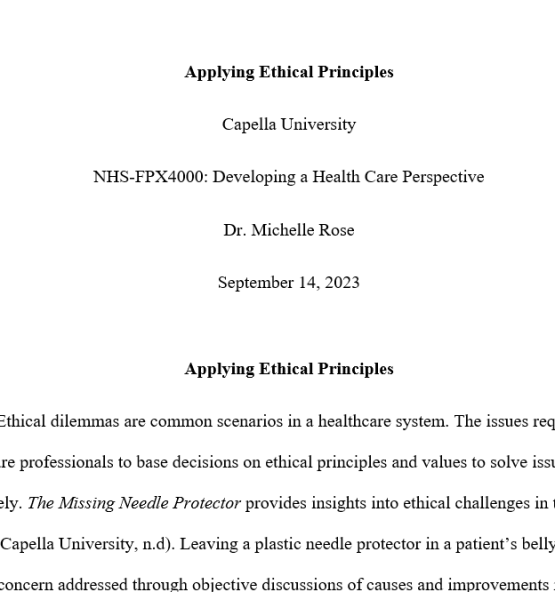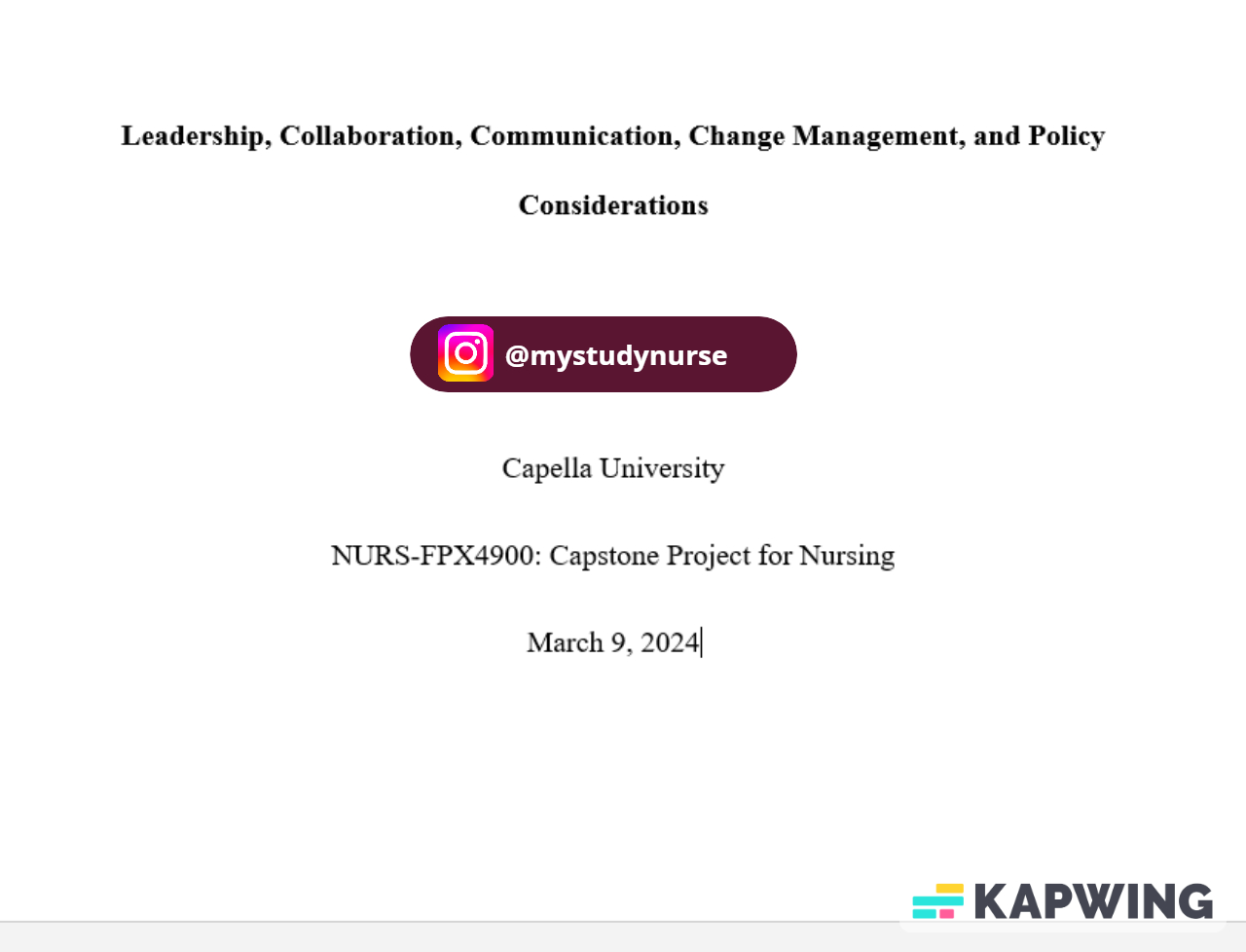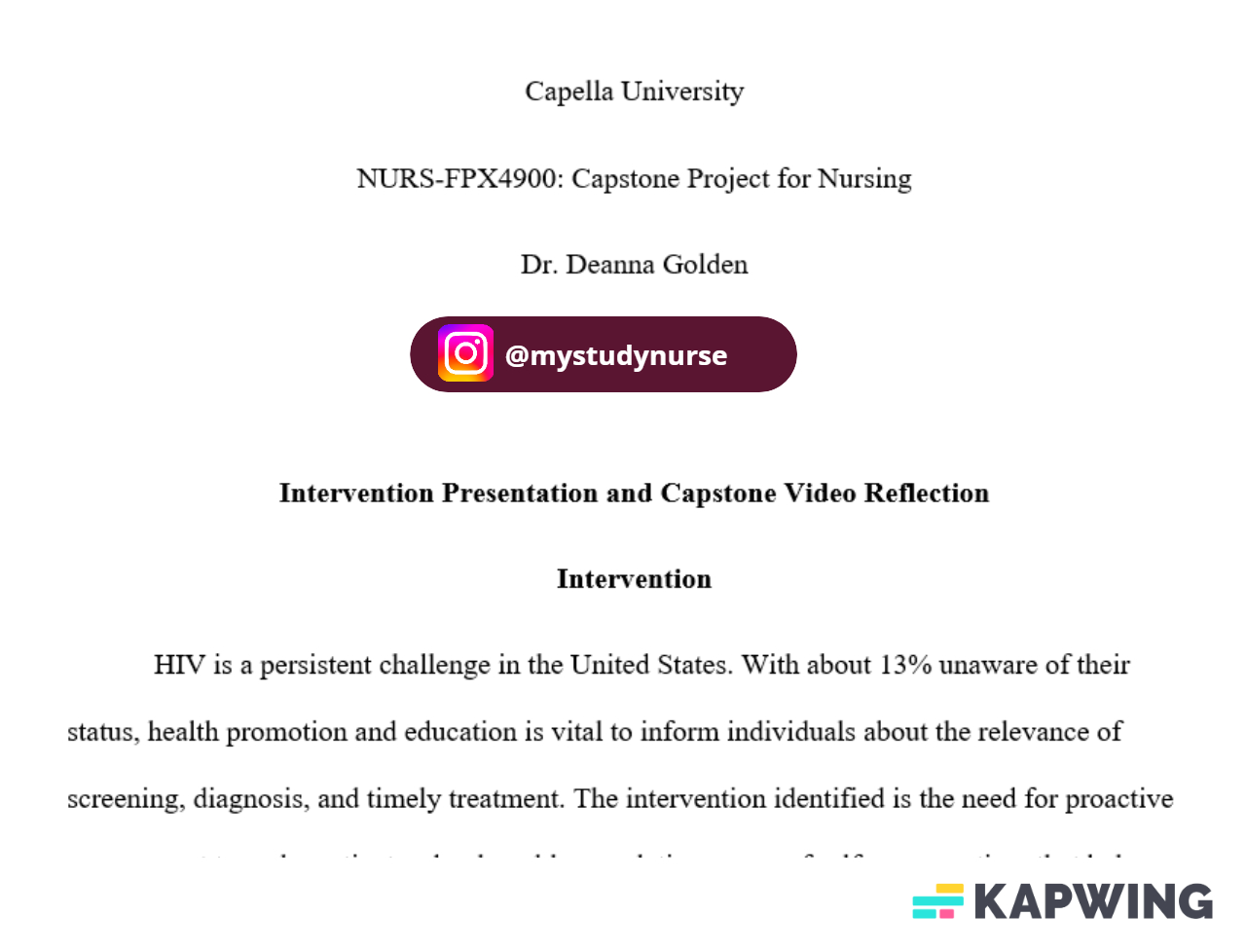


Applying Ethical Principles
Capella University
NHS-FPX4000: Developing a Health Care Perspective
Dr. Michelle Rose
September 14, 2023
Availability:In Stock
Ethical dilemmas are common scenarios in a healthcare system. The issues require healthcare professionals to base decisions on ethical principles and values to solve issues effectively. The Missing Needle Protector provides insights into ethical challenges in the clinical setting (Capella University, n.d). Leaving a plastic needle protector in a patient’s belly is a serious concern addressed through objective discussions of causes and improvements necessary to prevent similar incidents in the future.
The case describes one of the serious issues that undermine safety and quality of patient care. Leaving a plastic needle protector in a patient’s belly raises questions about robustness of the safety procedures during surgeries. In the case, the surgical team left the object due to claims that it was difficult to detect its presence due to its red-pink color. Straight, the director of clinical services expressed idea on getting the patient back into surgery without informing her that the surgical team is looking for the needle cover. However, the facility already discharged the patient, making it challenging to call Mrs. Jameson back. Kadivar et al. (2017) reminded healthcare providers to ensure they understand factors leading to an incident, staff obligations in handling an incident, and ethical issues of patient safety. Similarly, organizations should focus on consequences of the case based on the principles of beneficence and non-maleficence (Brown et al., 2021). Straight faces challenges overcoming organizational politics, including having to work with physically and mentally weak general surgeon.
Excellent communication is a priority for healthcare leaders and professionals aiming to sustain quality and safe patient services. Straight demonstrated effective communication skills as a director of clinical services. First, the director revealed intent listening skills that enable him to listen to the operating room supervisor without reacting harshly. The conversation between Straight and the supervisor showed that the former created an environment where it easier to explain the situation in details (Kadivar et al., 2017). As such, Straight managed to acquire accurate and complete information on events that transpired in the operating room. Straight’s engagement with the nurse also revealed awareness of interdisciplinary collaborations at the facility. In this case, it is crucial to give different parties the opportunity to explain the issue before making a conclusion.
Further, asking a hypothetical question enabled Straight to understand the issue deeply and consider options available to address the dilemma. However, the hypothetical question contradicted the requirement for honest and open conversations about safety issues in the facility. Similarly, Straight’s failure to engage Cutrite raised questions about ability to initiate and maintain horizontal communication in a complex surgical setting (Brown & Peetz, 2018). The weakness undermines Straight’s ability to embrace a transformational leadership style, which is necessary to break hierarchical barriers and status quo created by senior staff. From the case, it is evident that healthcare leaders should use active listening more to understand issues within the clinical environment and make informed conclusions about corrective measures. The process entails taking steps to consults and listen to members’ ideas about causes of a problem and viable solutions. However, leaders should avoid selective consultations since it undermines the need for horizontal and collaborative communication across the care continuum.
The events in the operating room describes challenges faced by healthcare professionals and measures for preventing similar incidents in the future. The ethical decision-making model guides the care team to familiarize with moral awareness, moral judgment, and ethical behavior across the care continuum (Kadivar et al., 2017). First, moral awareness is evident in Straight’s acknowledgment of a lapse that led to the team leaving an object in Jameson’s body. The process led to the director establishing the need for an informed decision based on values and personal morals. Moral judgment arises from Straight’s move to investigate the events and determine implications on patient safety in the future. Adherence to moral awareness and moral judgment principles reinforced Straight’s satisfaction about the need to avoid returning the patient to the operating room. Ideally, ethical behavior depends on a comprehensive view of the problem and implications on patients, the organization, and healthcare team. Straight’s commitment to seeking information from the nurse and the chief of surgery led to an informed conclusion to avoiding getting the patient back to the operating room.
Ethically, successful healthcare services requires professionals to adhere to patient best interests. Beneficence, non-maleficence, justice, and autonomy guides the care team to make informed decisions across the care continuum (Bakhtiari et al., 2020). In the case, Straight and team should have considered the patient’s self-determination on whether she wanted the object removed. However, the team violated the autonomy principle by denying Jameson the opportunity to decide on the right course of action, necessary to prevent discomfort in the future. Beneficence is another principle that reminds the care team to act in the best interests of a patient (Bakhtiari et al., 2020). Notably, it was wrong for the director of clinical services to allow a physically and mentally incompetent general surgeon to conduct the operation. The decision increased the risk of lapses due to Cutrite’s reduced ability to coordinate quality and safety measures.
The director should avoid exposing patients to harm by ensuring that only competent personnel perform procedures in the operating room (Bakhtiari et al., 2020). Straight demonstrated adherence to non-maleficence by dedicating time to understand events that transpired in the operating room and the implications of the lapse on Jameson’s health. In this case, healthcare professionals should make informed conclusions on patient’s safety to avoid exposing the latter to physical, emotional, and psychological distress in the future. Justice is another crucial consideration that allows health care leaders and staff to act fairly between competing issues. Straight’s decision to follow up on the case demonstrated resilience in promoting safety and well-being of patients. In this case, it is crucial to speak out against lapses to prevent similar scenarios from happening.
The Missing Needle Protector provides insights into some of the existing ethical dilemmas and implications on healthcare professionals and organizations. Health leaders should embrace a system-wide approach that enhance personal and collective accountability and responsibility toward protecting patients from harm. In this case, moral awareness, judgment, and ethical behavior should align with efforts to eliminate the status quo. The goal is to sustain collaborative approach to overcoming human, technical, and administrative vulnerabilities across the facility.





WhatsApp us
Reviews
There are no reviews yet.